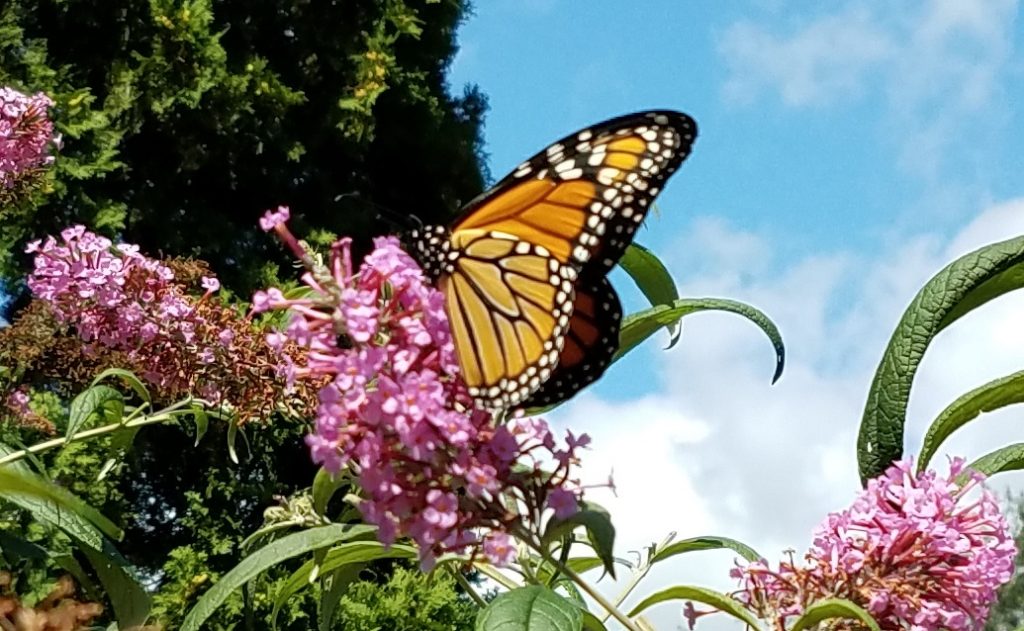Seeing Fewer Monarch Butterflies in Michigan? Here’s How You Can Attract Them [GARDENING TIPS]
Milkweed brings more monarchs to the yard. Here’s how you can plant a butterfly-friendly garden.

Are you seeing fewer monarch butterflies in your yard and around southeast Michigan during the summer months?
The short answer: probably. But you can help support their population. Scroll down and WDET’s Laura Weber-Davis will tell you what to plant in your yard to support the winged creatures.
It’s hard to measure butterfly population density in our area, but your instincts serve you well if you sense you’re seeing fewer showy orange-and-black butterflies than you did 20 or 30 years ago.
It takes a full year and multiple generations of eastern monarchs for the butterflies to fly from Mexico to the Midwest and southern Canada, and then return to Mexico for the winter. In Mexico the butterflies gather en masse, making it much easier for experts to determine the health and size of the monarch population. That population has declined precipitously over the last two decades.
Researchers at Michigan State University recently looked at the migratory patterns of monarchs and found several factors contribute to monarch population declines, including changing weather patterns in Texas during the spring, and loss of habitat along their flight path.
Check out this StoryMap to learn more about the migration of monarchs and the difficulty they face along the way:
You Can Plant Milkweed at Home to Support Monarch Butterflies
By Laura Weber-Davis
I have a patch of land in my home garden that is in need of something other than wood chips, dandelions, and general yearly neglect. I’ve decided to plant milkweed for my monarch friends. I called over to my local nursery and got the basics on what you need to know if you want to do the same.
1) This time of year it’s best to start with seed. In the spring you can find milkweed plants to put in the ground, but your nursery probably doesn’t have them in stock this time of year.
2) Don’t buy your seeds online. Call your local nursery and see if they have seeds in stock. If not, you can find the milkweed’s distinctive pods in fields or a friendly neighbor’s garden.
3) You want milkweed native to the area. Stick with the Common Milkweed (Asclepias syriaca) varietal. It produces a pinkish-red flower and grows to about 18 to 30 inches tall.
4) Fall is a good time to sow milkweed seeds. If you are getting seed from the pods, wait until the plant is brown and dry in the middle part of October. You’ll see the seeds begin to split from the pod. That’s the right time to pick and plant. You can sow them right on the surface of the ground like grass seed, or with a very fine layer of peat moss. Plants will emerge in the spring.
Note: Milkweed contains a type of latex, so if you have latex allergies they might be aggravated by this plant.
Thanks to Mike Abbott at Abbott’s Nursery in Ann Arbor for answering all my milkweed questions. Abbott’s has a lot of free milkweed seed on hand if you’re in the area or can make the trip to Ann Arbor.
To hear more from Professor Zipkin and Wayne State University environmental law professor Nick Schroeck on Detroit Today, click on the audio player above.
